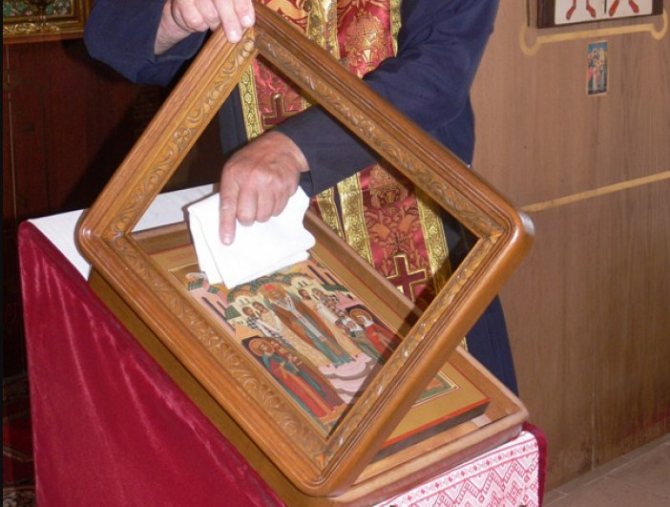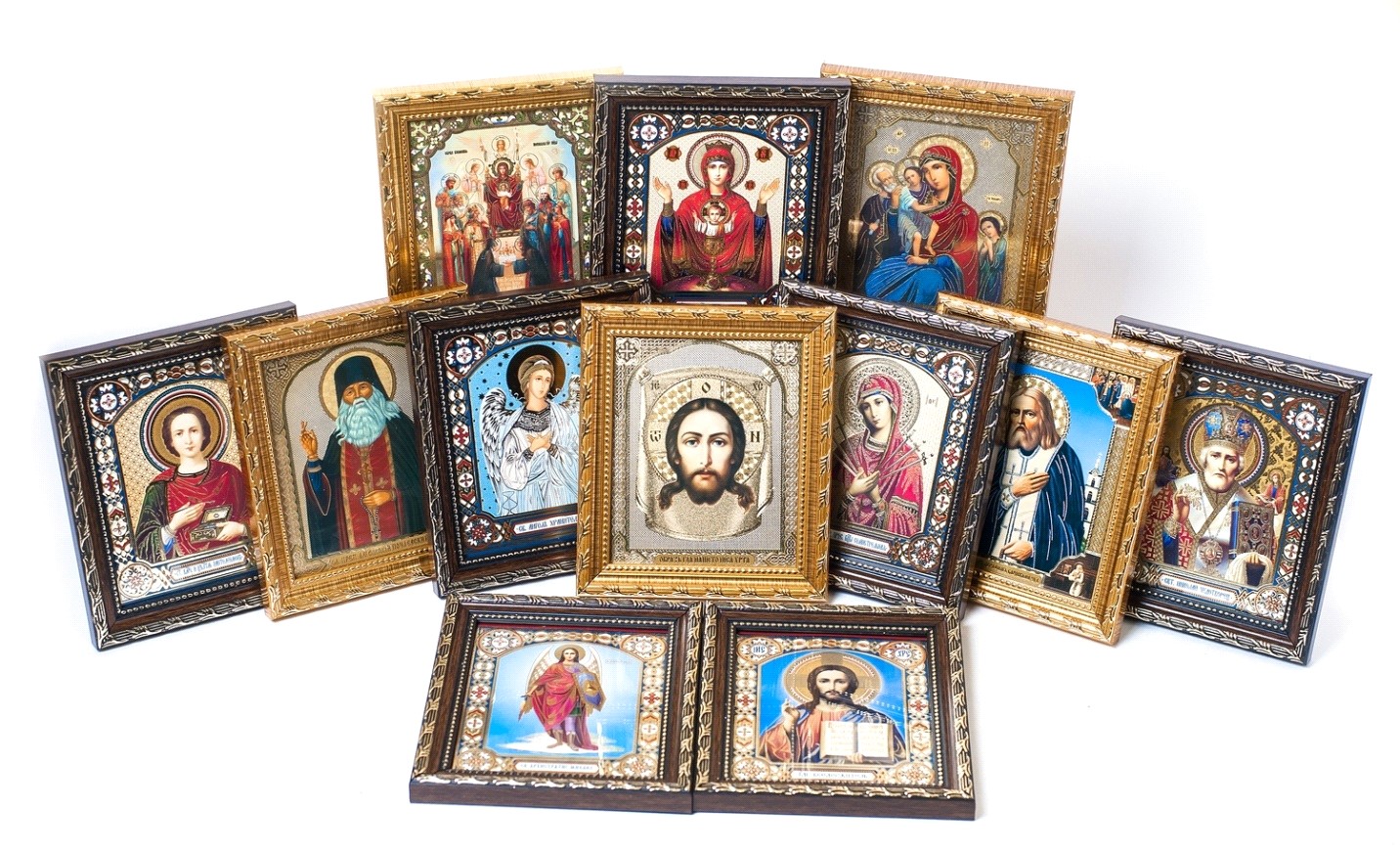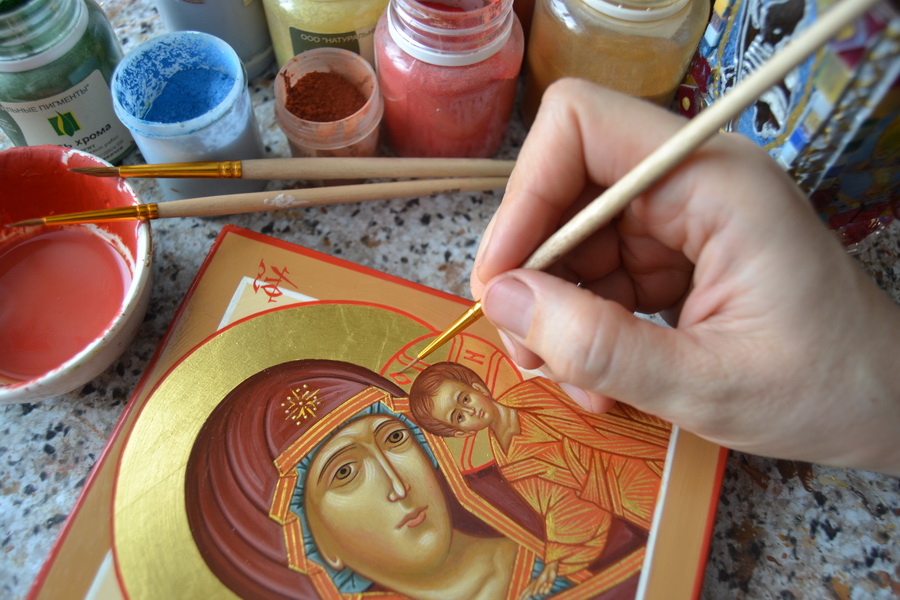About icons
For every Christian, an icon is not only a shrine, through which a person turns with prayer to God, but often holy images are the main family relic. The old icon is not only a valuable historical artifact, but also a kind of symbol of prayer continuity between generations of Orthodox Christians. They are inherited and may not have any cultural value, but for the owners they are a real treasure. Some of these exhibits survived the persecution of the Church and other calamities, and today we see that the destructive effect of time has not the most beneficial effect on them. And with sadness we see that our favorite icons can fade greatly over the years, or insects destroy the board, and the image can hardly be seen. Will only a major restoration help, or are there ways to prevent the destruction of holy images?
The first thing any person encounters in a temple is a huge number of sacred images - icons. Holy images have a great sacred meaning for every Christian, and it is not surprising that dozens of them are kept in the homes of believers. When buying icons in church shops, we often face the problem that it is not so easy to choose one from the number that is on the shelves. Icons differ in price, size, iconographic style, decoration, etc. So what is the difference between expensive and cheap icons, between handwritten and printed ones? Does the size of an icon affect its beneficial effect on a person? We will try to find answers to these and other questions.
Today many people, even those who are churched, come to church with a request to purchase or to pray in front of a specific icon to solve some problem. For example, in front of the image of the "Inexhaustible Chalice" they often pray to get rid of the passion of drunkenness, and from evil spirits they come to the image of the holy martyrs Cyprian and Justina, etc. The question arises whether such a custom attitude towards holy icons is correct, and there is no danger of veneration Are icons bigger than God? We have collected answers to these and other questions in our article.
Many Orthodox Christians wear around their necks not only a pectoral cross, but also small pectoral icons of the Mother of God or of some saints. These miniature images, made of silver or gold, are placed next to a cross, or on a separate chain. When did this type of icons appear? What is the point of wearing them? Are there any church rules for wearing those icons? Why can we assume that «Pandora» was worn during the times of Kievan Rus? Answers to these questions, as well as everything that you need to know about pectoral icons, we have collected in our article.
Icons that have become one of the symbols of Christianity, especially Orthodoxy, have not appeared in the Church at once. The Christian iconography itself developed over time, absorbing the cultural sentiments of society and new techniques of drawing. So why did icons emerge in the Christianity? Why is it important for Orthodox Christians to have their presence in the temples? We will find answers to these and many other questions in our material.
Ancient icons have always consisted the particular value in the decoration of each Orthodox church. In addition to material significance, they carried a special spiritual connection between the generations of worshipers. It is not for nothing that among the Orthodox people there is the expression “a worshipped icon”, applicable to old images. Despite the years of atheistic persecution of the Church, when a huge number of icons were destroyed or given to museums, some ancient icons have survived to our time.
Nowadays, icons are almost everywhere: in homes, offices, automobiles and shops. Of course, unfortunately, not all owners of icon-painting images understand the meaning of placing the icon and what should be done with it. Therefore, we decided to help all visitors to our website not only to purchase an icon quickly and easily, but also to figure out how to treat icons properly. For reaching this goal, we have prepared answers to the most frequently asked questions about icons.
Icons are not only the images used for the prayer to God, but also the objects that often have not only sacral, but also historical or personal value. For example, an icon written three hundred years ago may be valuable due to its style of writing or whoever has written it. A family image, handed down from generation to generation, may have no cultural value, but be very important for an individual family or genus. If valuable ancient icons are preserved in museum or private collections, in the second case the question always arises, what to do with old icons?
The answer to the question of what icons should be in the house should begin with a clarification that in Orthodoxy there are no rules that would determine how many and which icons should be in the house of the believing person. Usually, in the house of an Orthodox person there are icons of the Trinity, the Savior, the Virgin and the most revered saints.
In our time, the process of making icons has become much simpler. Thanks to the development of new technologies and techniques, icons were made faster and easier. In particular, as a result of this, more different kinds of icons have appeared, among which one can meet, for example - icons of amber or relief icons made of metal, the method of manufacturing of which differs greatly from the classical one.




.jpg)
.jpg)
.jpg)
.jpg)
.jpg)
.jpg)



